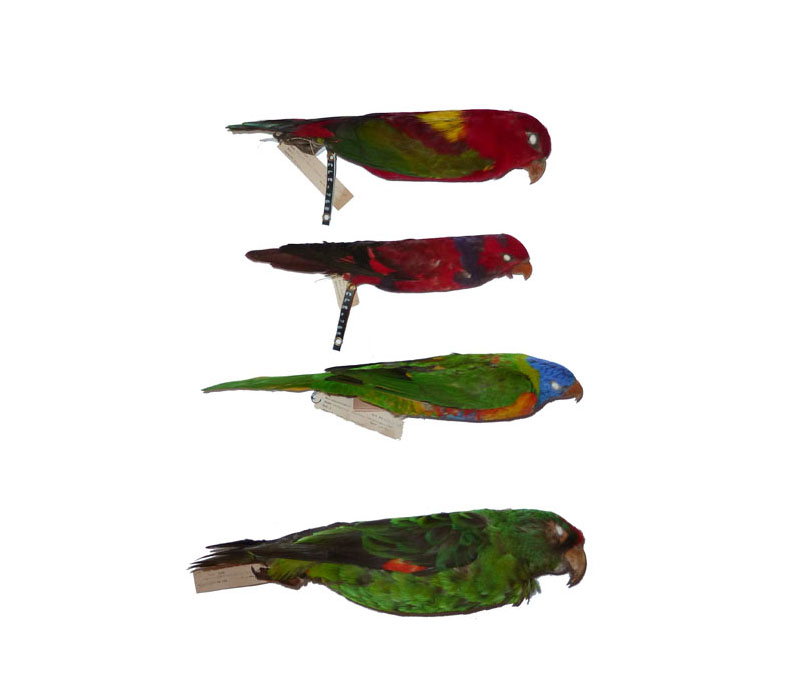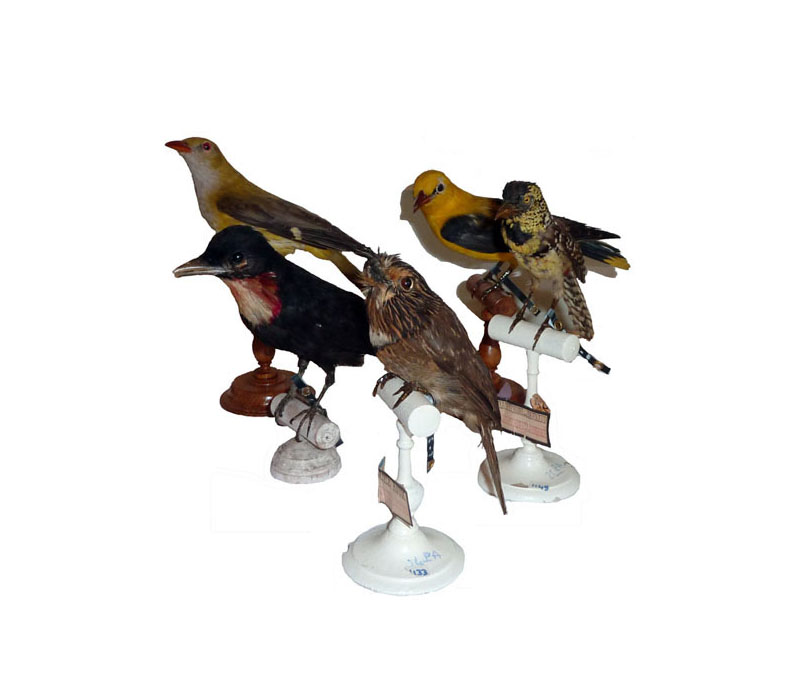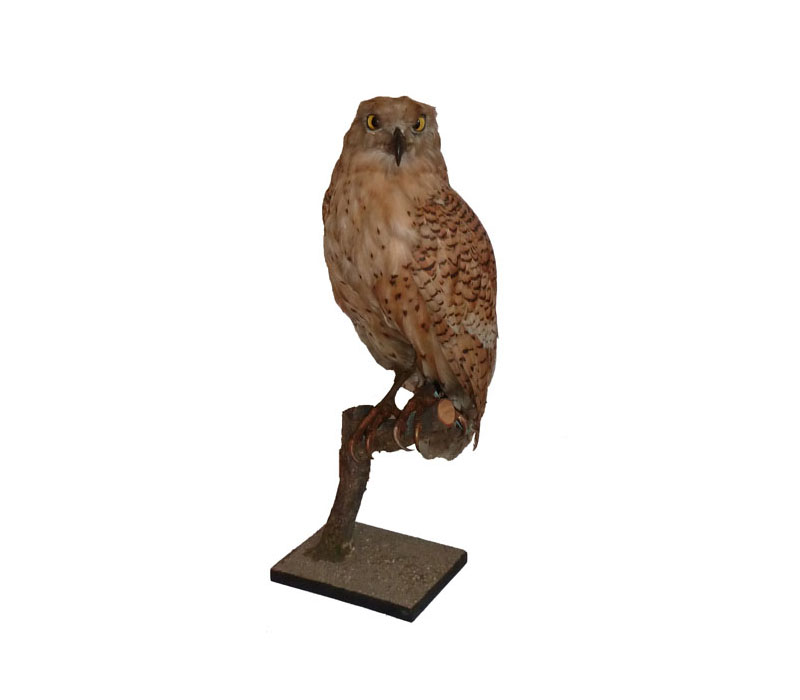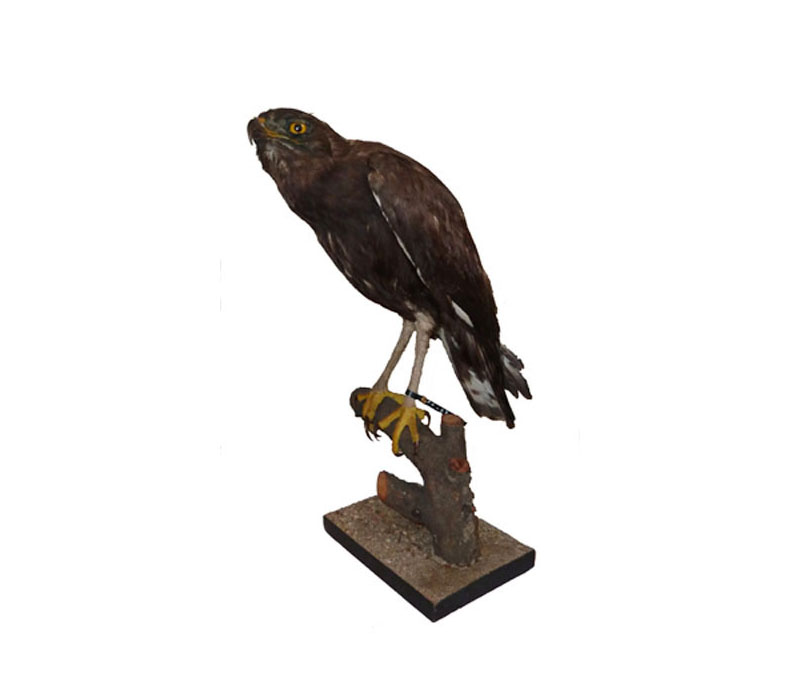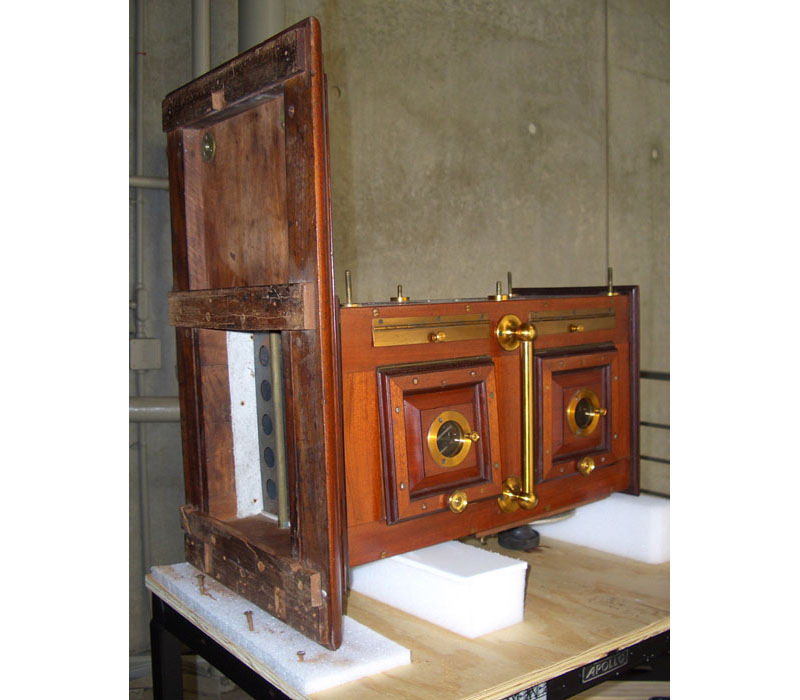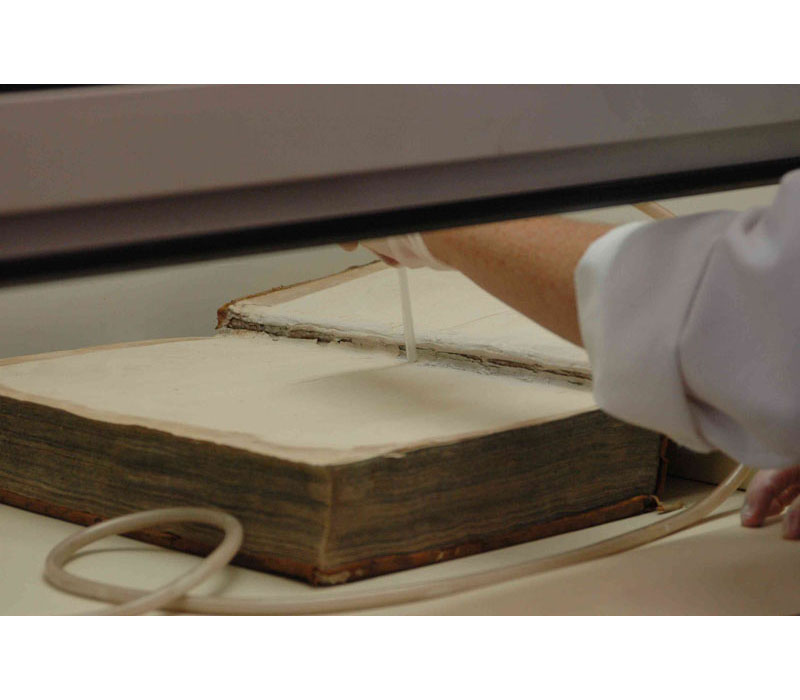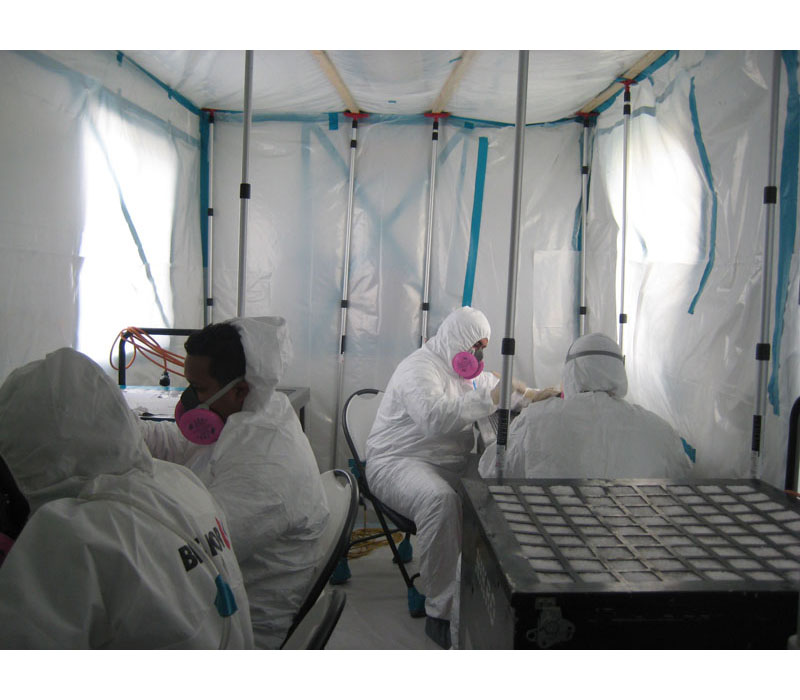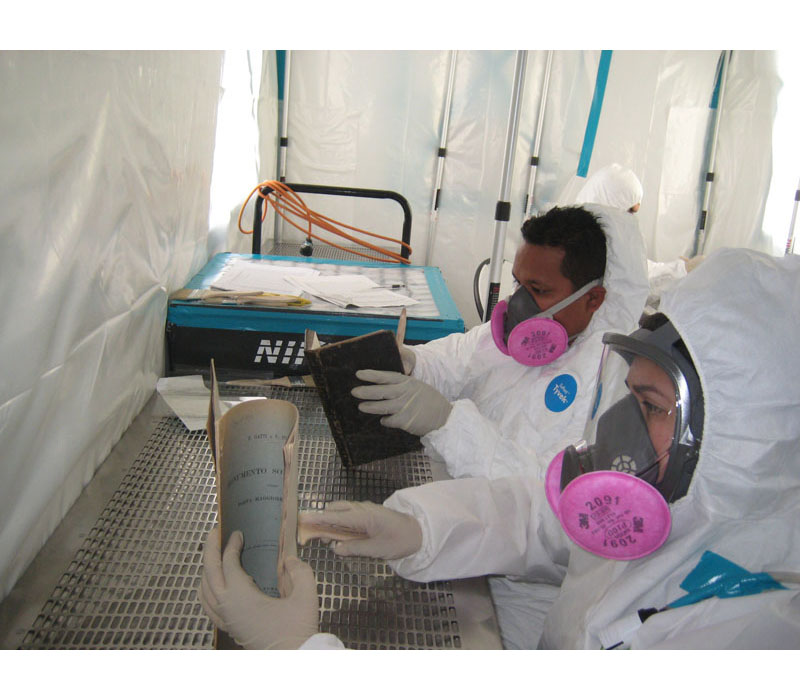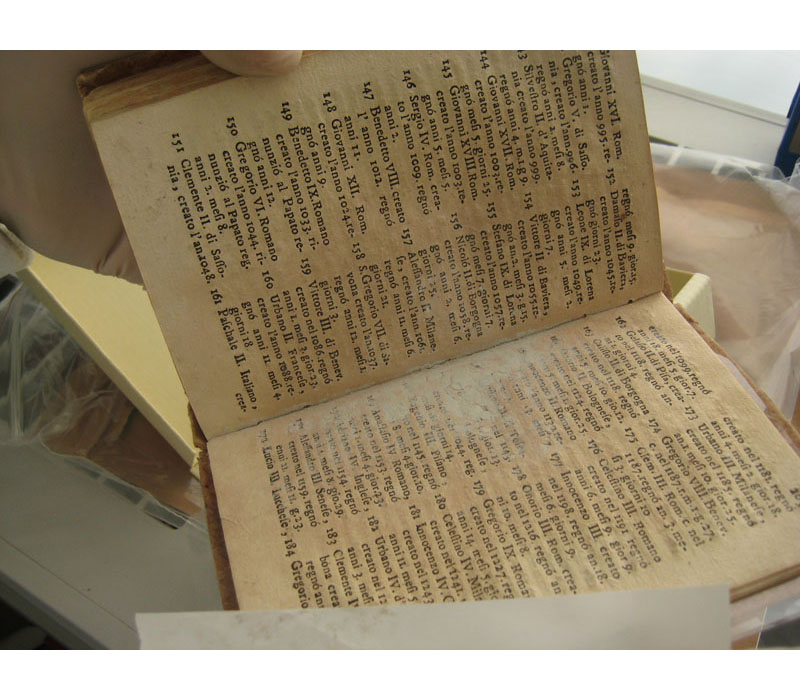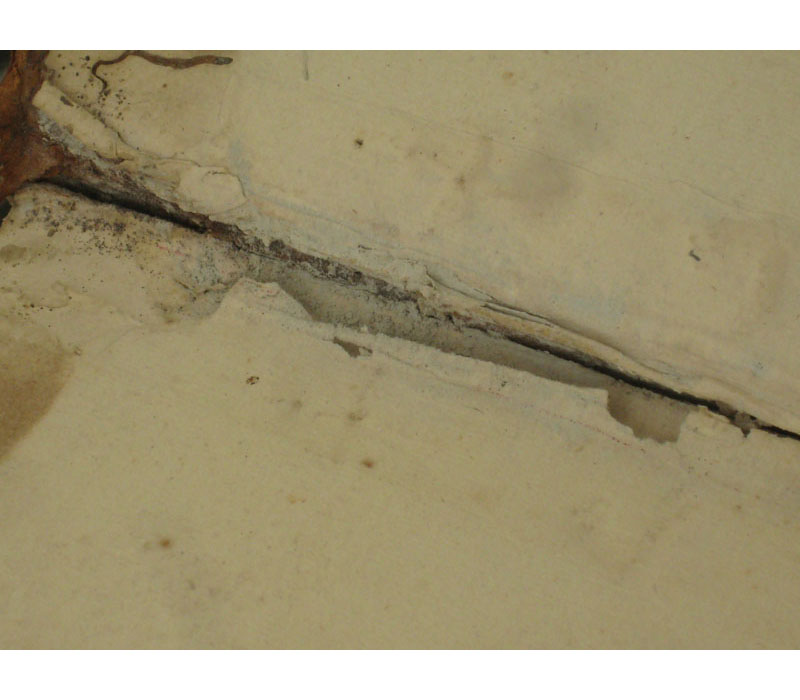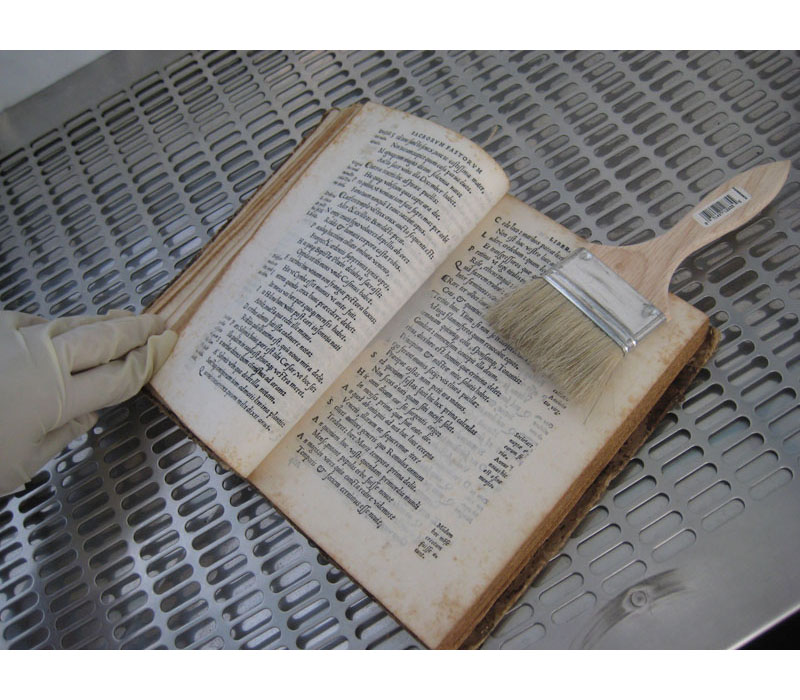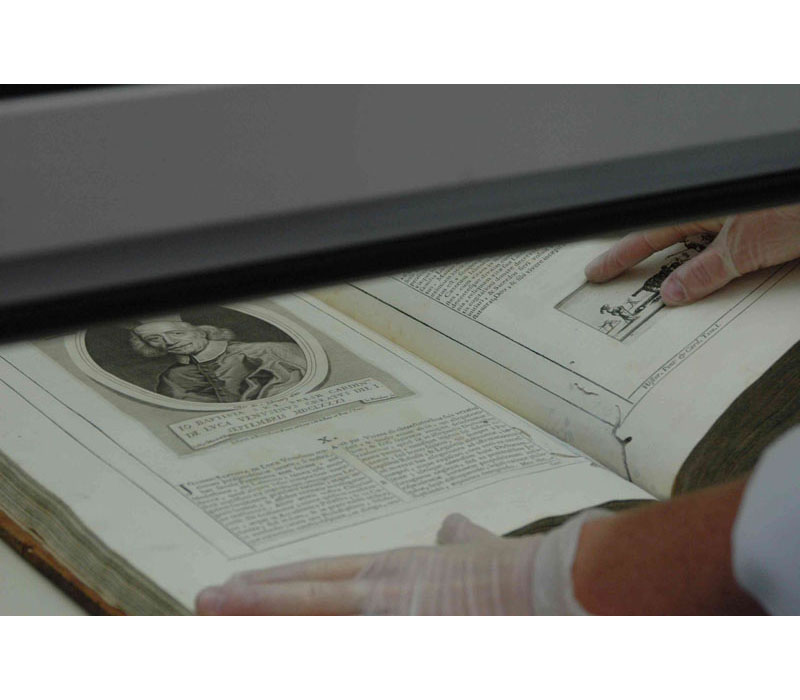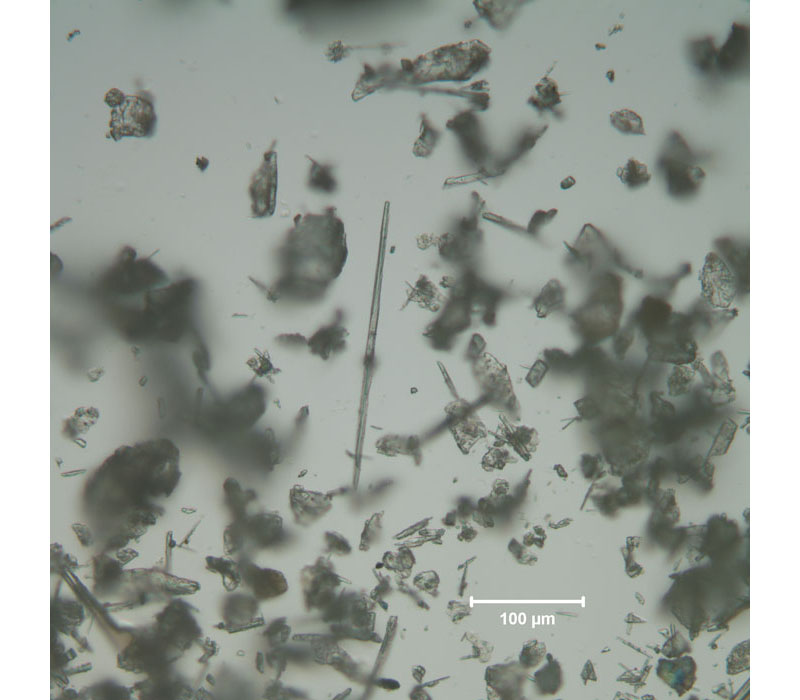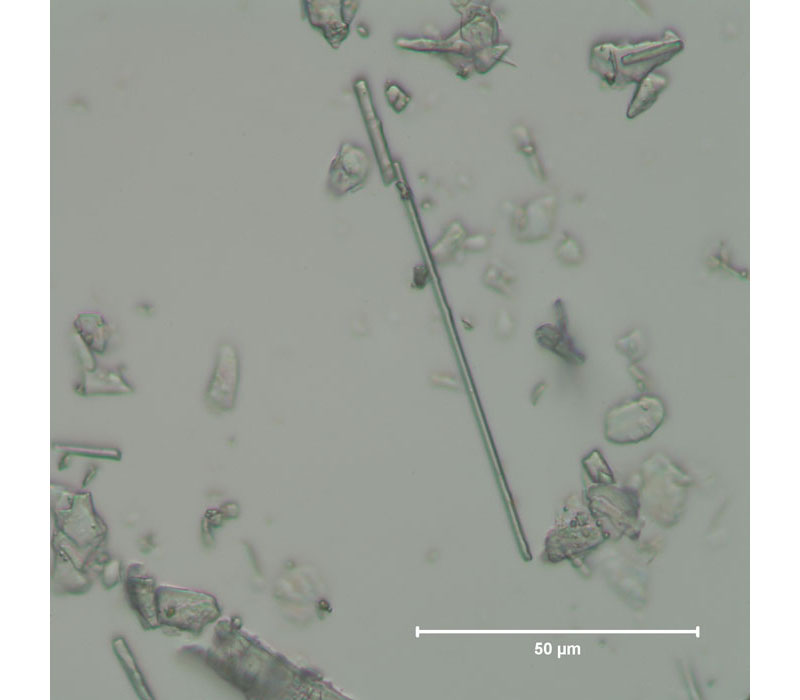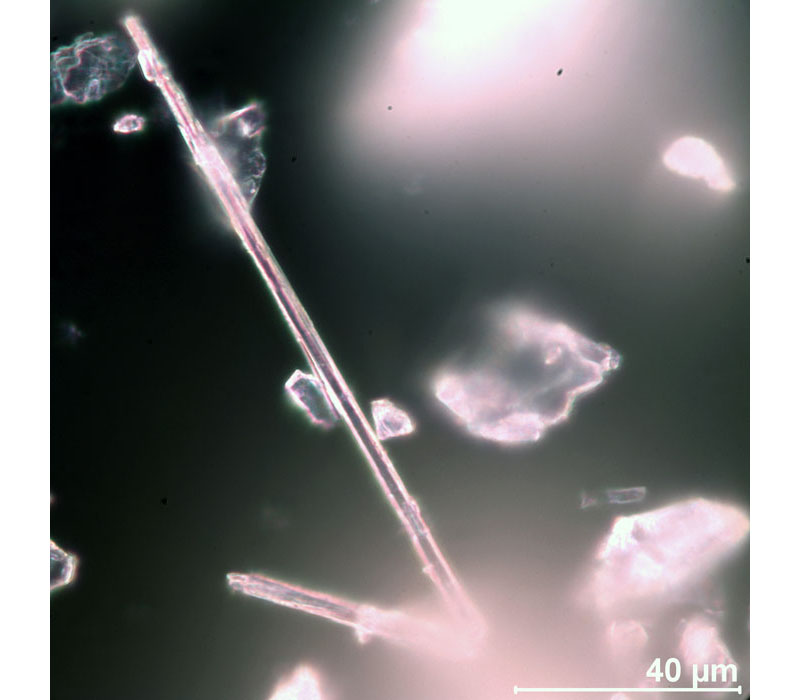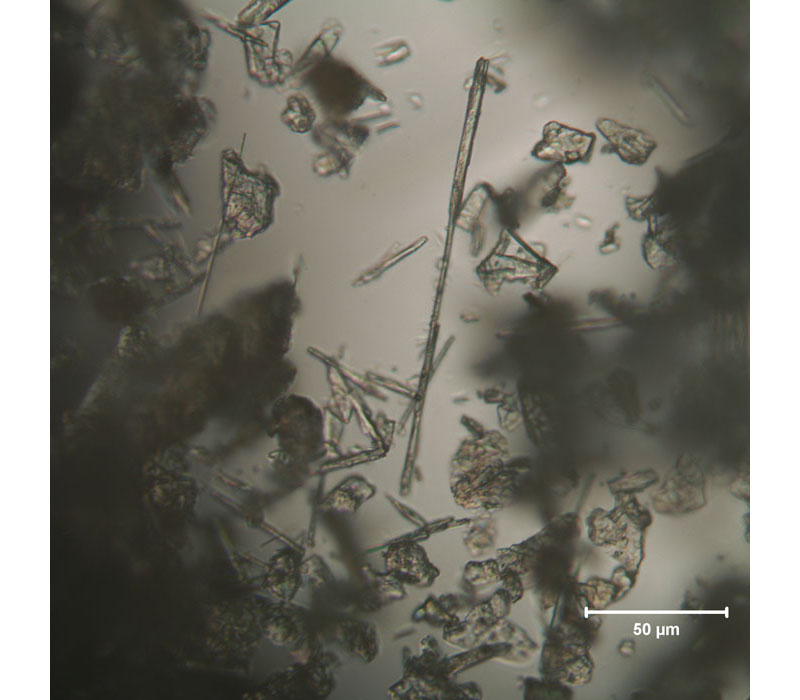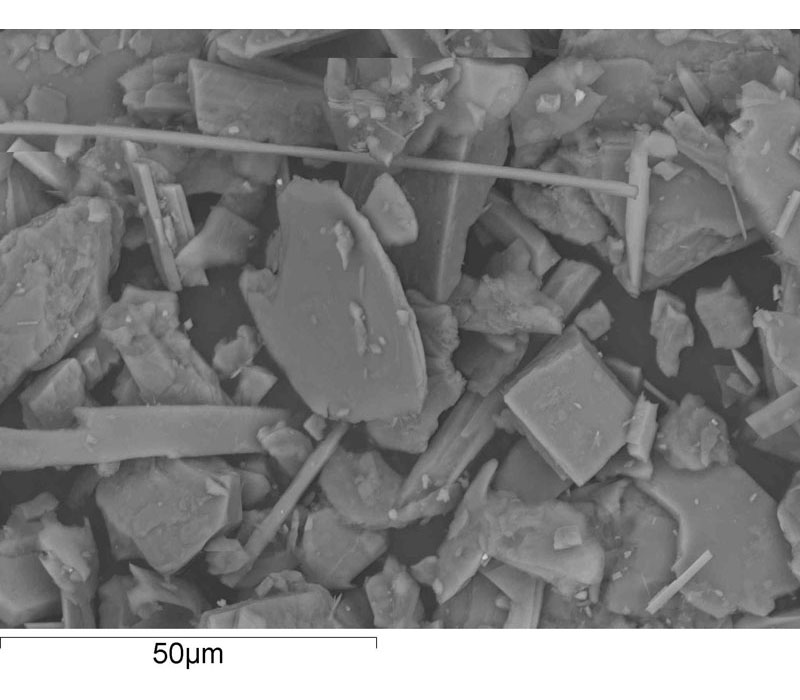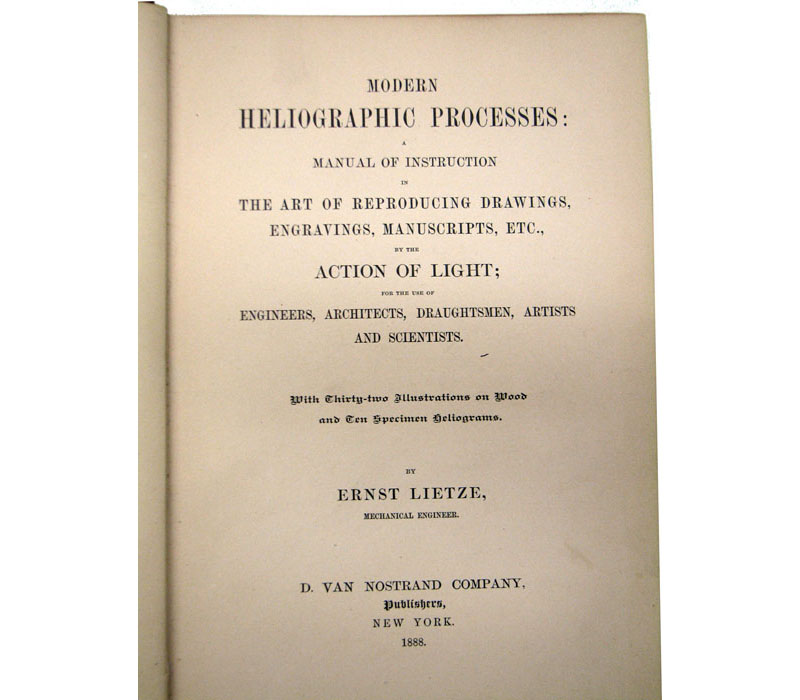The experience at CARAA in the analysis of toxic products include to date: the detection of asbestos, mercury and lead in art objects, arsenic in ethnological objects and taxidermy.
Less known than pigments, metal alloys or ceramics, toxic materials yet exist in art. It is therefore imperative to remove or replace them with more stable and less harmful products.
Detecting toxic material
This is the first step prior to any decontamination process. Some products are toxic if inhaled, others are in contact with the skin. All toxic elements are theoretically detectable if the level of detection is enough important. The main chemical elements studied at CARAA are lead, arsenic, mercury and asbestos.
Where toxic products can be found
- Lead can be found in significant amounts in certain works of art but also in paints, infrastructures and industrial materials. Detection of lead by XRF is one of the specialties at CARAA.
- Asbestos has been considered toxic only recently. It has been extensively used in the past in the building sector, but it has also been detected in some historical objects such as magic lanterns (19th century) where it plays the role of thermal insulating or, in books in association with talc (see images below).
- Arsenic and mercury are other toxic elements often used in the past and that nowadays are detected in ethnological objects or in taxidermy.

